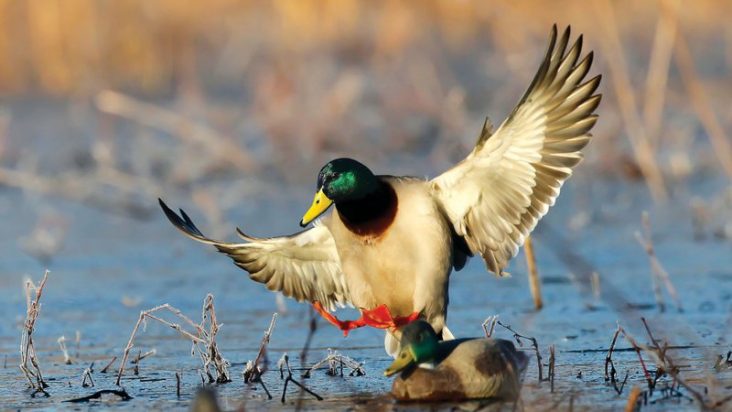Game & Fish Commission to alter flooding controls at three wildlife management areas to protect duck habitats
by September 7, 2021 4:28 pm 1,233 views

Courtesy Arkansas Game & Fish Commission.
Three Arkansas Game and Fish Commission’s wildlife management areas (WMAs) will undergo changes to water control measures during the waterfowl wintering period in order to protect stress on the forests and to promote reforestation in those quadrants.
The publicly-accessible George H. Dunklin Jr. Bayou Meto WMA, Henry Gray Hurricane Lake WMA and Earl Buss Bayou DeView WMA will undergo altered flooding operations to prevent further stress to valuable red oak species on traditionally flooded bottomland hardwood forests and to assist with new growth for future duck habitats, the AGF&C said.
“We really started talking about these issues and the need for change in water management in 2017, and a lot of work has gone on behind the scenes to study and build the groundwork for major renovations to infrastructure,” said Brad Carner, chief of wildlife management for the AGFC. “Hunters will begin to see some changes in how flooding occurs on these areas as we now move forward with some of the actions developed through that background work.”
The first change will come at Henry Gray Hurricane Lake WMA near Bald Knob. Trees in the area’s former south greentree reservoir (GTR) saw a massive die-off in 2018, which led to the AGFC leaving the water-control gates open and drafting plans to help water flow through the area. Trees in the area’s north GTR also had substantial stress when the die-off occurred, and continued flooding during the growing season has added to that damage.
“Beginning this year, we will leave the Glaise Creek water control structure open to allow water to flow through the north GTR instead of artificially holding it back,” Carner said. “The area can still flood with substantial rainfall or rises in the White River, but we can’t continue to artificially hold water on the area and add additional stress to the trees there.”
Bayou Meto also will see some changes this year in managed water levels. Much of the red oak component in Bayou Meto is showing severe stress, and managers will hold all intentional flooding during the 2021-22 wintering period at 179 MSL, an elevation that will relieve stress on many of those trees. Again, rain and increased flow into the water management area will allow water to rise above that level periodically, but artificial flooding will be stopped at the 179 MSL mark.
“This will potentially leave 1,857 acres of Bayou Meto’s greentree reservoirs with unmanaged water,” Carner said. Fifteen percent of the Government Cypress GTR, 27 percent of Upper Vallier and 8 percent of Lower Vallier greentree reservoirs will be affected.”
The third change to water management will come at Bayou DeView WMA. The Thompson Tract on the water management area also will be allowed to rise and fall naturally without the gates being operated beginning with the 2021-22 season. Instead of saving stressed trees, the action at this greentree reservoir is an effort to help the next generation of forest.
“Wildlife stand improvements in 2019 opened up the canopy of that forest and allowed sunlight to reach the forest floor,” Carner said. “We’ve seen an excellent crop of willow oaks sprout from that effort. Logging being conducted in Bayou DeView will open more forest up for this regeneration to create the next forest and benefit ducks and other wildlife. We need to allow water to flow freely through the area to protect those young trees that will one day be the forest our children and grandchildren will hunt.”
Carner explained that although trees are very long-lived, they do have a lifespan and do have an age when their productivity drops.
“As trees lose their productivity from age or severe stress, we must make room and care for the young trees that will take their place,” Carner said. “It will be decades before the seedlings we see today are producing acorns for wildlife, and we need to manage for that transition now to prevent larger-scale habitat loss in the future.”
